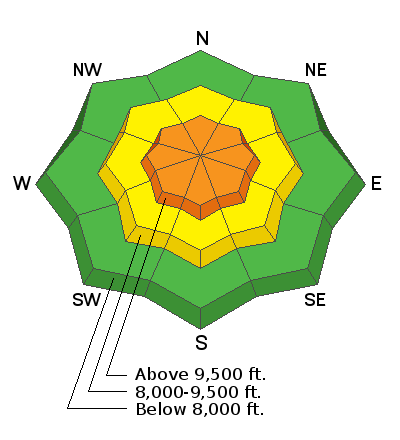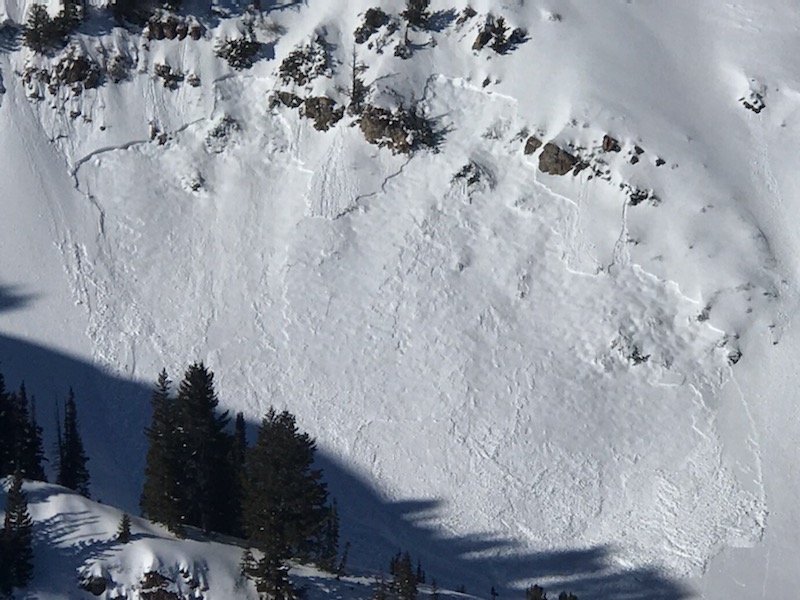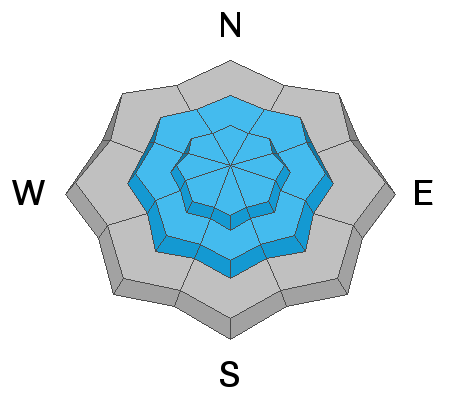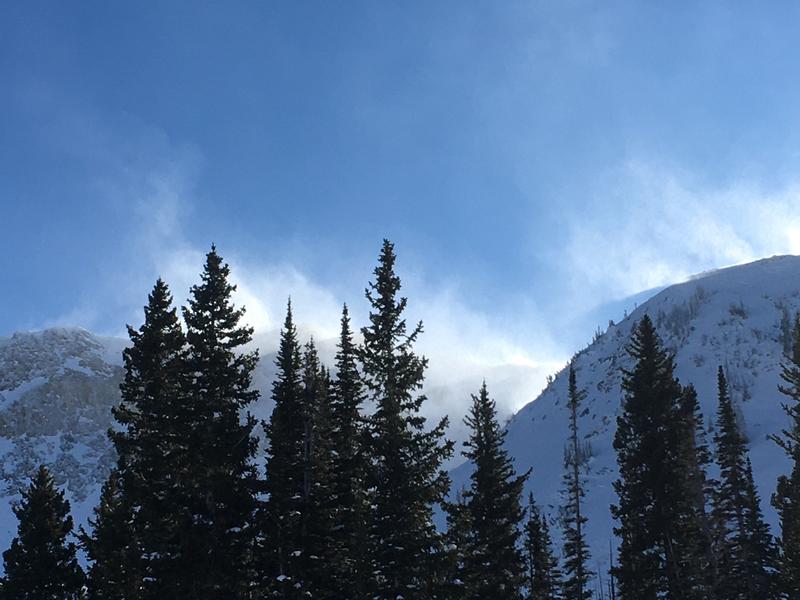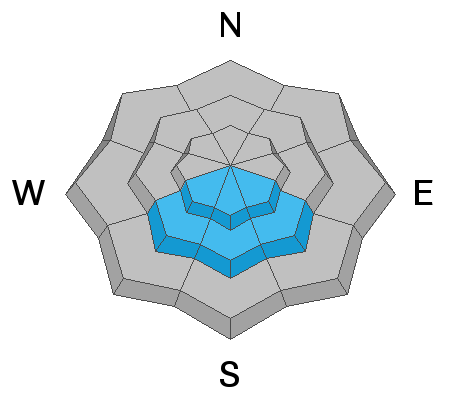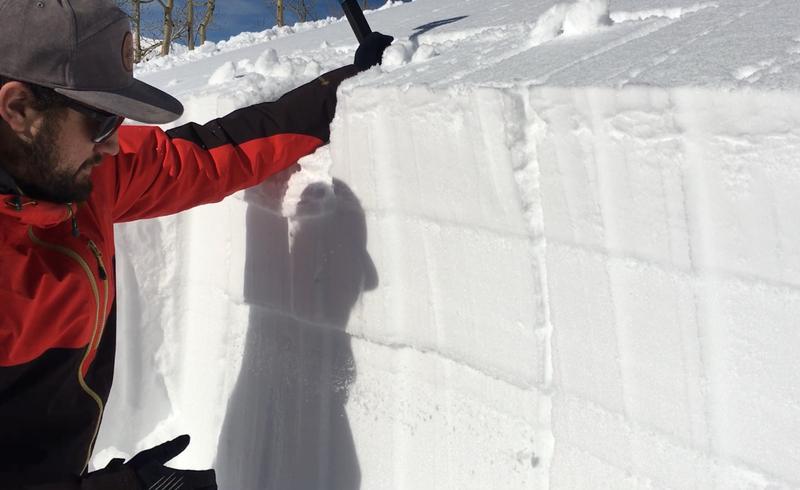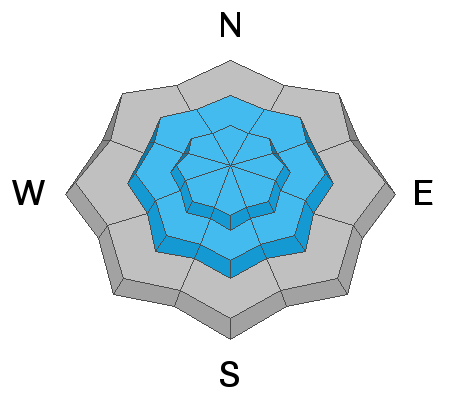Since yesterday morning, the central Wasatch picked up 5-12 inches (0.3-0.5 inches of water) of low-density snow in mountains. The bulk of this snow came in yesterday midday.
This morning, mountain temperatures are in upper teens F at trailheads and low teens to single digits F at ridgetops. Westerly winds have backed off this morning after blowing all day yesterday and into the early evening with gusts near 50 mph at the upper elevations early last night.
Today, the westerly winds will remain light overall but we could see some gusts near 30 mph before the wind switches to west-northwesterly and start to pick up again this evening. Occasional snow showers will continue through the day with no real accumulation. Temperatures will be in the low 20s F.
Yesterday, in the backcountry the new snow was sluffing easily and running fast and far on a variety of old crusts. In the ski resorts, some natural dry loose and soft slab avalanches occurred, this includes a few small natural cycles directly following the period of most intense snowfall rates.
The most recent avalanches to occur in the old snow happened Tuesday. On the south face of Gobblers Knob, Trent and I saw a natural soft slab avalanche on a steep face at 9800' below rocks that occurred sometime between 1 pm - 1:30 pm. The crown looked to be 12-18” deep which leads us to believe it occurred on the persistent weak layer of facets adjacent to the melt-freeze crust. This avalanche was about 150' wide and ran about 250'. See full observation
HERE.
Photo of a natural avalanche on the south face of Gobblers Knob at 9800'..
A full list of recent avalanches and observations can be found in the Menu bar above.

